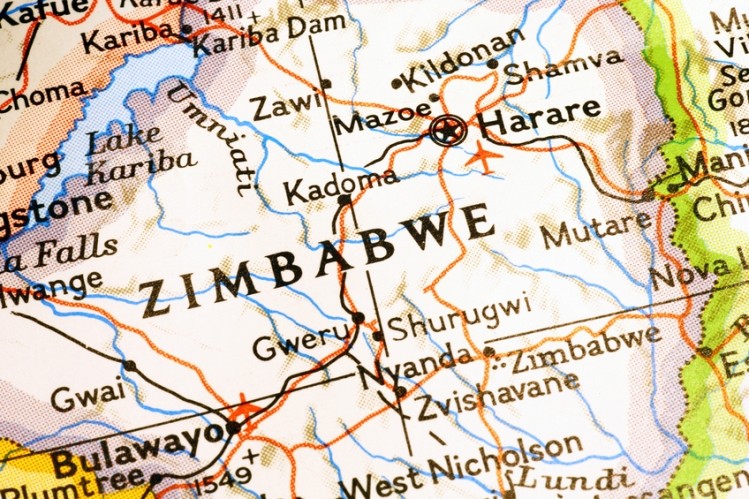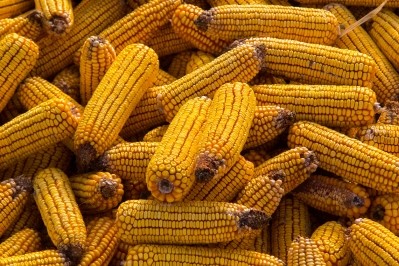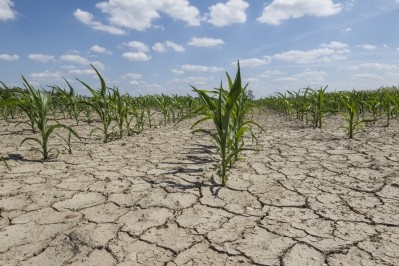USDA: Imports needed as drought hits Zimbabwe corn production

Drought conditions during the growing season likely mean that the country is going to need to import about 1.4m tons of corn in the 2016/17 marketing year said the USDA in the Grain and Feed Annual Report. Wheat imports are also expected to increase.
Previously, much of the corn for feed or human use imported by Zimbabwe came from neighboring countries including South Africa, Ambia and Malawi, the agency said. However, those areas were affected by the same drought conditions.
“The Zimbabwe government and the private sector are targeting corn imports mainly from Mexico, the US, Ukraine, Brazil and Argentina, of approximately 1.4 million tons,” the agency said. “The Zimbabwean government is expected to import about 700,000 tons, while the private sector will import the balance.”
Regional imports, by Zimbabwe and other countries, are anticipated to include about 6.2m tons of corn and 5m tons of other grains, noted the report. The amounts are expected to create pressure at area ports.
Corn conditions
“Zimbabwe experienced one of its driest seasons since the 1992/93-season, due to a strong El-Nino induced drought,” reported the USDA. “As a result, corn production in the 2016/17 MY declined by an estimated 43% to 400,000 tons.”
Official numbers have yet to be released, but experts on the country’s agriculture sector are predicting yields of about 0.6 tons a hectare, said the agency. About 95% of the country received 75% or less of the expected rainfall.
“The country experienced an ElNino induced drought, characterized by a late season start, low rainfall that was erratic and poorly distributed and higher than average temperatures during the growing season,” said the agency. “Most areas in the country experienced two to three weeks of dry weather conditions and high temperatures for the greater part of January and February.”
The government declared the farming season a “state of disaster” in February, as some parts of the country reported crop failure at or above 65% the agency said. “The most affected areas by the drought were parts of the Midlands, Masvingo, the southern parts of Manicaland provinces, as well as the provinces of Matabeleland North and South,” it added.
Zimbabwe had a dry growing season in 2015/16 that produced about 700,000 tons of corn, a decline of about 52%, said the USDA. The estimated 400,000 ton crop for 2016/17 also will not meet the annual national requirement of about 1.8m tons of corn.
The country planted about 774,426 hectares in corn, which was a reduction of 49% from the crop planted in 2015/16, the agency said. Fewer acres were planted predominantly because there was a late start to the rainy season and the limited distribution of rainfall.
Matabeleland South, which had the largest reported drop in planting, saw a reduction of 82%, and Matabeleland North a drop of 66%, the agency said.
The majority of the corn produced in the country does go to human use, but a growing amount is expected to be used as a feed crop in the livestock sector, the agency said. “As a result of the poor grazing conditions, due to two successive droughts, demand for livestock feed is expected to increase by about 30 percent, to 400,000 tons, in the 2016/17 MY,” it added.
From January through April of 2016, the country has already imported about 4,850 ton of feed corn, said the USDA.
Wheat concerns
Wheat production in the country has been declining annually, and about 7,000 hectares were planted in 2016/17, the agency said.
It is estimated that the country’s wheat crop produced about 16,000 tons, the agency said. Imports are expected to be about 280,000 tons for 2016/17.
“ZIMSTAT [the Zimbabwean National Statistics]data shows that Zimbabwe imported 94,285 tons wheat mainly from South Africa, Russia, Mauritius, Canada and Mozambique between October 2015 and April 2016,” reported the USDA. “Imports of wheat flour mainly from South Africa reached 48,436 tons.”












